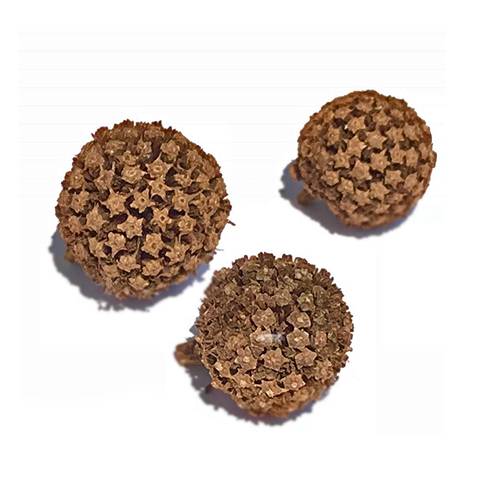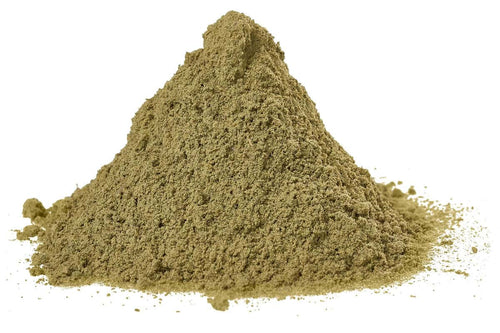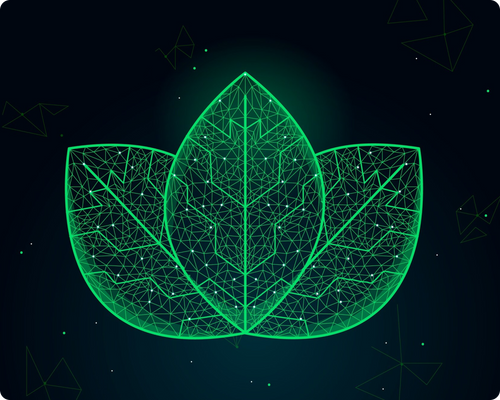Key Takeaways
- Sustainable harvesting practices are essential for preserving kratom tree populations
- Overharvesting threatens biodiversity in Southeast Asian ecosystems
- Ethical sourcing supports both environmental conservation and indigenous communities
- Alternative Mitragyna species offer sustainable options to traditional kratom
- Growing your own kratom from seeds can reduce pressure on wild populations
Introduction to Kratom and Overharvesting Concerns
Kratom (Mitragyna speciosa) is a tropical evergreen tree native to Southeast Asia that has become really popular in recent years. At Mitra Science, we've noticed some worrying trends about wild kratom populations. More people around the world want kratom products, which has led to heavy harvesting that threatens these amazing trees in their natural homes.
Kratom trees grow slowly and need several years to become fully grown. In Thailand, Malaysia, Indonesia, and other Southeast Asian countries, local communities traditionally harvested these trees carefully to make sure they'd always have them. But as more companies got interested in kratom, wild trees started facing more pressure.
Overharvesting happens when trees are collected faster than they can grow back. This not only reduces the number of kratom trees but also messes up the balance of the ecosystems where these trees grow. As experts in bulk kratom wholesale products, we know we need to address these problems and promote better practices throughout the industry.
In this article, we'll look at how overharvesting kratom trees affects everything from the environment to local communities, and talk about sustainable options that can help save this valuable plant for future generations.
The Natural Habitat and Growth Cycle of Kratom Trees
Kratom trees (Mitragyna speciosa) grow naturally in the tropical rainforests of Southeast Asia, mainly in Thailand, Malaysia, Indonesia, and nearby countries. These big trees belong to the same family as coffee plants. In the wild, kratom trees can grow up to 82 feet tall with trunks as thick as 3 feet, though trees grown by people are usually smaller.
Kratom trees grow pretty slowly compared to other tropical plants. It takes 3-5 years from when a seed sprouts until you have a mature tree that can be harvested sustainably. This long growth period makes kratom especially vulnerable to overharvesting.
Kratom trees need humid, tropical conditions with lots of rain (at least 2,000 mm yearly), steady temperatures between 70-90°F, rich soil that drains well, and protection from harsh direct sunlight (they naturally grow under other trees).
When kratom trees reproduce, they make seed pods with many small seeds inside. These seeds don't sprout easily (only 10-20% will grow) and don't stay good for long, which makes it hard for trees to naturally replace themselves even in perfect conditions. Our kratom seeds are carefully collected and shipped quickly to give you the best chance of growing them successfully.
The leaves, which are what people harvest, go through natural cycles of growth and aging. Traditional harvesting methods involve picking only mature leaves while leaving younger ones to keep growing, so the tree stays healthy. This sustainable approach is very different from the harmful harvesting methods that have become common as commercial demand has increased.
Ecological Impacts of Kratom Overharvesting
When too many kratom trees are harvested, it affects the whole ecosystem where these trees naturally grow. As an important part of Southeast Asian forests, Mitragyna speciosa plays many roles that get disrupted when too many trees are removed.
Biodiversity Loss
Kratom trees help support many kinds of wildlife by providing homes for insects, birds, and small mammals. They also provide food through their leaves, flowers, and seeds, and create shade that helps other plants grow underneath. When kratom trees are removed, these relationships get disrupted, which can lead to fewer species in the area. Animals and plants that have evolved alongside kratom trees are especially at risk from these changes.
Soil and Water Systems
Kratom trees help keep ecosystems stable with their root systems that prevent soil erosion (especially near rivers), nutrient cycling through fallen leaves that decompose, and protection of water sources in forest ecosystems. When kratom trees are removed, especially by cutting down entire areas or taking whole trees, it can lead to more soil washing away, changed water patterns, and lower water quality in affected areas.
Genetic Diversity Concerns
Overharvesting often targets the easiest-to-reach trees or ones with specific traits people want, which can lead to less genetic diversity among the remaining kratom trees, loss of locally adapted types with unique properties, and decreased ability to survive environmental changes, pests, and diseases. At Mitra Science, we know how important it is to preserve genetic diversity in Mitragyna species, which is why we offer alternatives like Mitragyna javanica and Mitragyna hirsuta extracts that can reduce pressure on Mitragyna speciosa populations.
Visualizing Ecological Impact
Biodiversity Loss
Overharvesting disrupts forest ecosystems by reducing plant variety and altering wildlife habitats. This can lead to fragmentation of natural communities and decreased ecosystem resilience.
Soil Erosion
Removal of kratom trees reduces ground cover, leading to topsoil loss and decreased water retention. This soil degradation can cause nutrient depletion and affect future vegetation growth in harvested areas.
Genetic Diversity Reduction
Targeting specific trees with desirable characteristics reduces genetic variation within kratom populations. This limits adaptability to environmental changes and may increase vulnerability to pests and diseases.
Economic and Social Implications for Local Communities
Overharvesting kratom trees doesn't just hurt the environment - it also seriously affects the local communities that have relied on these plants for their livelihoods. Understanding these social and economic effects is important for finding complete solutions to the sustainability problem.
Traditional Harvesting Practices and Cultural Heritage
For generations, indigenous communities in Southeast Asia have harvested kratom leaves in sustainable ways that keep the trees and surrounding ecosystems healthy. These practices are deeply connected to their cultural knowledge and local identity. When outside commercial interests drive overharvesting, it can lead to the loss of traditional ecological knowledge, disconnect people from cultural practices related to kratom, and cause the disappearance of sustainable harvesting techniques that were developed over hundreds of years.
Economic Vulnerability and Market Dynamics
Local communities involved in kratom harvesting face tough economic challenges when overharvesting happens. They might make quick money from intensive harvesting, but then the resource runs out long-term. Prices go up and down wildly as supply changes due to unsustainable practices. Often, middlemen and exporters make most of the money, not the local harvesters. This creates a dangerous dependency on a single resource that's becoming harder to find.
At Mitra Science, we work directly with indigenous tribes in Southeast Asia to source our White Maeng Da Kratom and other varieties, making sure they get fair payment and encouraging sustainable practices.
Community Resilience and Adaptation
Despite these challenges, many local communities are actively responding to overharvesting concerns. They're developing community-based conservation projects, forming cooperatives to increase their bargaining power and ensure fair prices, switching to cultivation instead of wild harvesting, and creating local rules to protect kratom resources.
The socioeconomic impacts of kratom overharvesting show we need approaches that balance economic opportunities for local communities with long-term ecological sustainability. By supporting fair trade practices and community-based conservation efforts, consumers and businesses can help address these challenges while preserving access to kratom products.
Sustainable Harvesting Practices and Conservation Efforts
In response to the challenges of overharvesting, various sustainable approaches have been developed to ensure kratom can continue as both an ecological resource and commercial product. At Mitra Science, we actively support and use these practices throughout our supply chain.
Selective Leaf Harvesting Techniques
Traditional sustainable harvesting methods focus on picking specific leaves rather than taking whole trees. Only mature leaves are harvested, leaving younger leaves to keep growing. No more than 70% of a tree's leaves are taken at one time. Harvesters wait 1-2 months between harvests to let trees recover. Trees that are too young or small are left alone. These practices keep kratom trees healthy and productive for many years, providing a sustainable source of leaves while maintaining the tree's important roles in the ecosystem.
Cultivation and Agroforestry Approaches
Moving from wild harvesting to growing kratom is a promising solution. Dedicated kratom farms reduce pressure on wild populations. Agroforestry systems grow kratom alongside other crops, mimicking natural forest conditions. Growing kratom in the shade preserves tree cover and maintains biodiversity. Controlled growing conditions can improve leaf quality.
Our Yellow Vietnam Kratom comes from established farms that follow these sustainable growing practices, ensuring consistent quality while protecting wild populations.
Certification and Standards Development
Official standards help consumers identify sustainably harvested kratom. Third-party certification programs verify sustainable harvesting practices. Documentation tracks kratom from forest to consumer. Industry-wide standards establish best practices for harvesting and processing. Transparency initiatives tell consumers about where products come from.
Sustainable Harvesting Best Practices
Sustainable vs. Unsustainable Kratom Harvesting Impacts
Sustainable Harvesting
Unsustainable Harvesting
Higher scores indicate more positive impacts (0-100 scale)
Source: MitraScience Research Data, 2024
By using these sustainable practices throughout the supply chain, we can make sure that kratom remains available as a valuable botanical resource while protecting the forests where it grows and supporting the livelihoods of local communities.
Alternative Mitragyna Species as Sustainable Options
As concerns about overharvesting Mitragyna speciosa continue to grow, other species in the Mitragyna genus offer promising sustainable options. These related plants share some botanical characteristics with traditional kratom while often facing less harvesting pressure, making them valuable additions to the botanical market.
Mitragyna Hirsuta: A Sustainable Alternative
Mitragyna hirsuta, known locally as "Kra Thum Kok" in Thailand, is one of the most promising alternatives to traditional kratom. It grows naturally in parts of Thailand, Cambodia, and Vietnam, contains a compound called mitraphylline as its main alkaloid, grows in similar conditions to Mitragyna speciosa, and currently faces much less harvesting pressure.
Our Kra Thom Kok Mitragyna Hirsuta Powdered Extract gives consumers a sustainable alternative that helps reduce pressure on traditional kratom populations. This 100:1 extract is concentrated - it takes 100 kg of leaves to make 1 kg of extract, which maximizes efficiency while minimizing resource use.
Mitragyna Javanica: Another Sustainable Option
Mitragyna javanica, known as "Kra Thom Na" in Thailand, is another good alternative. It contains compounds called mitrajavine and 3-isoajmalicine as its main alkaloids, is found more widely across Southeast Asia, is often more common in certain regions than Mitragyna speciosa, and can be grown using similar methods to kratom.
Our Mitragyna Javanica Kra Thom Na Powdered Extract is made using similar concentrated extraction methods, creating a high-quality botanical product that works well as an alternative to traditional kratom.
Benefits of Diversifying Botanical Options
Promoting these alternative Mitragyna species offers several benefits. It reduces harvesting pressure on Mitragyna speciosa populations, spreads ecological impact across multiple species, creates market reasons for conserving diverse Mitragyna species, gives consumers more choices in the botanical market, and supports research into the broader Mitragyna genus.





















